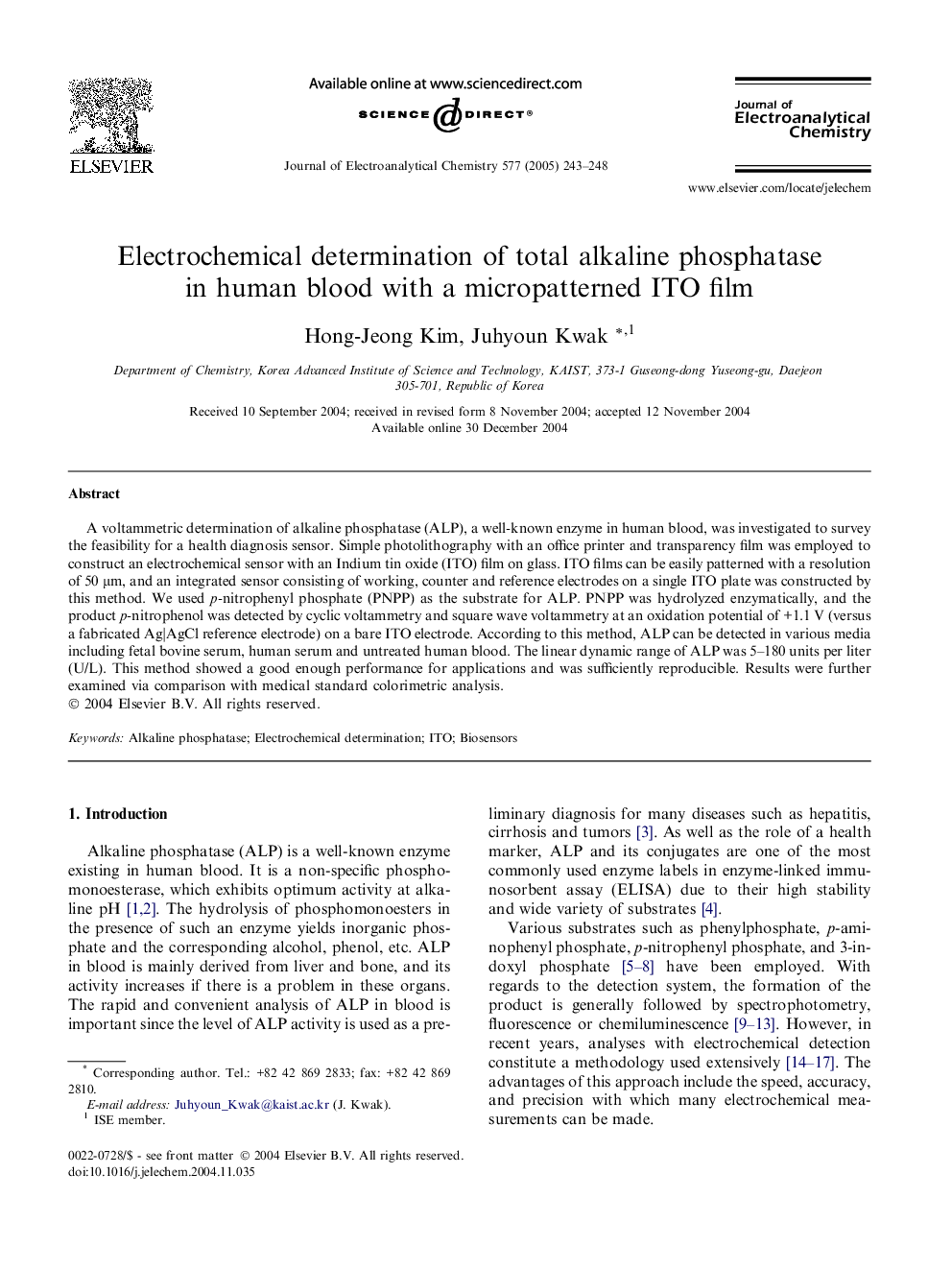| Article ID | Journal | Published Year | Pages | File Type |
|---|---|---|---|---|
| 10276082 | Journal of Electroanalytical Chemistry | 2005 | 6 Pages |
Abstract
A voltammetric determination of alkaline phosphatase (ALP), a well-known enzyme in human blood, was investigated to survey the feasibility for a health diagnosis sensor. Simple photolithography with an office printer and transparency film was employed to construct an electrochemical sensor with an Indium tin oxide (ITO) film on glass. ITO films can be easily patterned with a resolution of 50 μm, and an integrated sensor consisting of working, counter and reference electrodes on a single ITO plate was constructed by this method. We used p-nitrophenyl phosphate (PNPP) as the substrate for ALP. PNPP was hydrolyzed enzymatically, and the product p-nitrophenol was detected by cyclic voltammetry and square wave voltammetry at an oxidation potential of +1.1 V (versus a fabricated Agâ£AgCl reference electrode) on a bare ITO electrode. According to this method, ALP can be detected in various media including fetal bovine serum, human serum and untreated human blood. The linear dynamic range of ALP was 5-180 units per liter (U/L). This method showed a good enough performance for applications and was sufficiently reproducible. Results were further examined via comparison with medical standard colorimetric analysis.
Related Topics
Physical Sciences and Engineering
Chemical Engineering
Chemical Engineering (General)
Authors
Hong-Jeong Kim, Juhyoun Kwak,
